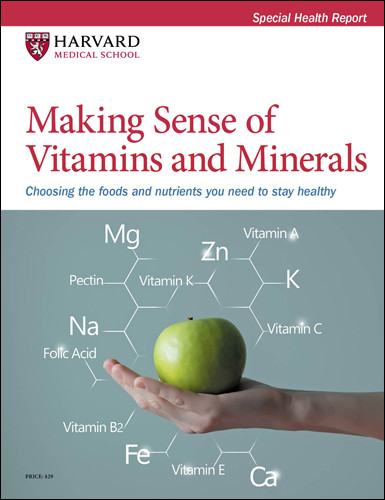Vitamins vs. minerals
What distinguishes a vitamin from a mineral? A vitamin, simply put, is an organic substance—one produced by a plant or an animal—that is required in small amounts for human life. (The first syllable, vit-, comes from the Latin word for “life.”) With the exception of vitamin D, vitamins cannot be synthesized in the body and must come from food. They are therefore considered essential micronutrients.
A mineral is an inorganic element—one that comes originally from rocks, soil, or water (though it may enter your diet through a plant that has absorbed it from the environment, or an animal that has eaten such a plant). There are many minerals, but only certain ones are necessary for human health.
Another difference is that vitamins have complex structures that can be broken down by heat, air, or acid. Minerals are simpler elements that hold on to their chemical structures. That means minerals can easily find their way into your body through the plants, fish, animals, and fluids you consume. It’s more difficult to shuttle vitamins from food into your body, because cooking, storage, and simple exposure to air can inactivate these more fragile compounds.
Despite their differences, vitamins and minerals often work together. For example, vitamin D enables your body to pluck calcium from food that is passing through your digestive tract, rather than harvesting it from your own bones. Vitamin C helps you absorb iron. However, the interplay of micronutrients isn’t always cooperative. For example, too much vitamin C can block your body’s ability to assimilate the essential mineral copper.
There are a couple other distinctions to be aware of. Vitamins are subdivided into two categories— water-soluble and fat-soluble—with implications for your diet. Minerals, too, are subdivided into major minerals and trace minerals, depending on how much you need of each. Many vitamins and some minerals are also classified as antioxidants.













